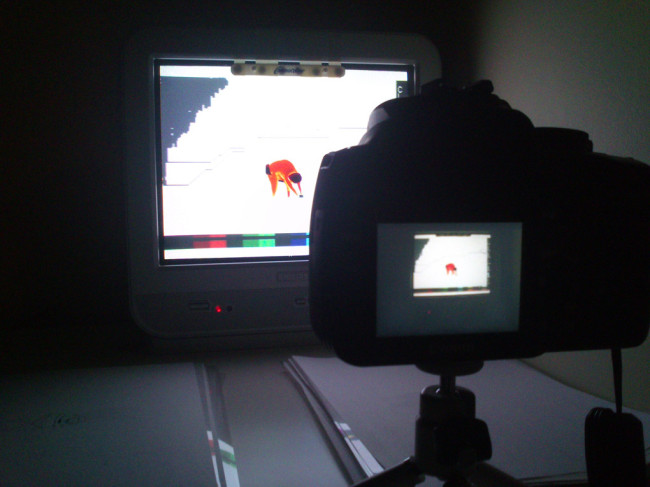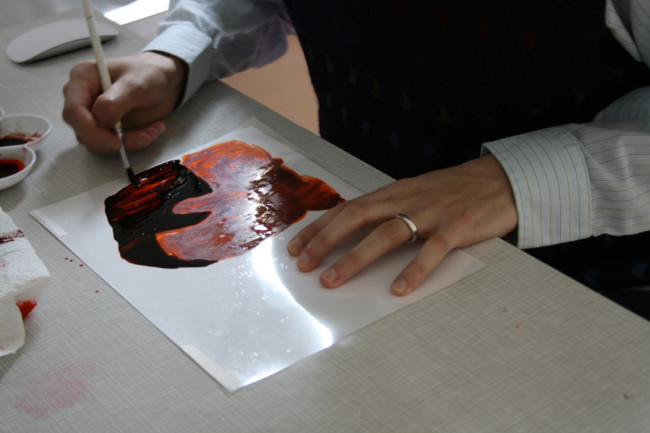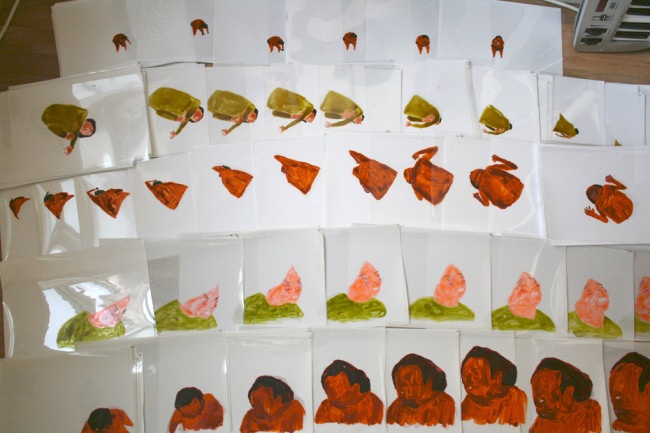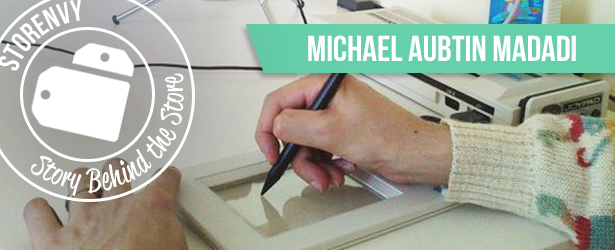The Value of Exploring Multiple Mediums
An Interview with Michael Aubtin Madadi
In a field that mainly focuses on the end result, Michael Aubtin Madadi, a professional animator, realized that his artistic pursuit could also spawn a separate side business. After spending a year and a half creating the animation Sefton’s Dream, Michael realized that the over 1500+ images used to create this animation could be used to start a separate creative venture and opened a Storenvy store to sell the physical illustrations! We reached out to Michael to find out why he decided to utilize this different medium as a business opportunity and why exploring multiple mediums is a valuable tool for any creative entrepreneur.
Name: Michael Aubtin Madadi
City: Tokyo, Japan
Store Owner Since: 2007
Opened on Storenvy: May 2013
If you were to create a superhero, what would their powers be? Some kind of flying, time-traveling, superhero…with the ability to eat ice cream.

Storenvy: I’d love for you to share your story and tell us how you decided to pursue animation?
Michael Aubtin Madadi: I studied illustration at university but I didn’t really enjoy it, and to be honest, wasn’t particularly good at it. I loved drawing and coming up with characters and little stories though so, one day, I decided to try and make an animation. After that, I pretty much straight away realized that was what I wanted to do forever.
As an animator, typically it’s the finished project that is seen and not the process. Why did you decide to start selling the cels from Sefton’s Dream?
Usually, once I’ve finished an animation I’m left with piles of drawings that I end up throwing out. However, as I was animating Sefton’s Dream I started to become quite attached to some of the cels as still images themselves, so I decided to pick out the ones that best expressed what was happening in the animation and make them available for anyone to keep.

As an artist/creative professional, why do you find it important to utilize different mediums for distributing your work?
I think one of the most important processes in producing work is thinking about how you’d like the work to be seen. By exploring new ways of exhibiting your work, it’s possible to reach different audiences and give the work new context, and I feel that’s definitely something I was able to do by selling my work on Storenvy.
Do you have any advice for those who want to start pursuing a creative interest as a business?
I think that while it’s important to think about what will sell from a business perspective, it’s equally important to be precious about your work in terms of what you choose to make commercially available and how you make it available. There’s always a temptation to make as much work as possible available for sale in order to be profitable, but if not careful I think that this approach can devalue your work. For instance, I’ve been asked on a couple of occasions to make the music from animations available for sale. While this would basically cost me nothing to do, I felt releasing the individual songs commercially would detract something from the animations they were created for. I think it comes down to finding a balance between making a range of work accessible without doing so at the detriment to the quality of the work itself.

What are the most challenging and rewarding parts of pursuing a creative industry?
In both cases, definitely producing the work itself. The way I animate, projects inevitably end up taking a long time to finish, and those times, when I’m halfway through a project with nothing yet to show for it, can be a bit challenging.
How long did it take to make Sefton’s Dream and how many animation cels did you use?
All together, from the start of the final piece to completing the music, it took about a year and a half. I’m not actually sure how many animation cels I used, a lot of cels are re-used and looped. In terms of individual drawn cels, I lost count after 1500.

What have you learned from selling your physical art work?
Well, for one thing I’ve learned how an audience of my animations translates, if at all, to those who want to physically own my work. Most importantly, I’ve learned how I can make work that can be distributed in a different medium and exist as artwork in its own right.
Sefton’s Dream from Michael Aubtin Madadi on Vimeo.




